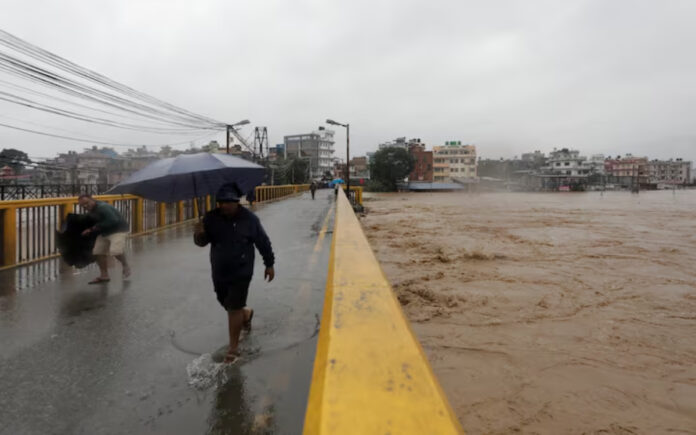Kathmandu: Nepal has announced a three-day school closure following devastating landslides and floods triggered by two days of heavy rain, which have resulted in 100 fatalities and left 67 people missing, officials reported on Sunday.
The floods have paralyzed normal activities and traffic in the Kathmandu Valley, where 37 deaths were confirmed in a region housing 4 million residents, including the capital city. Authorities noted that students and parents faced significant challenges, as many school and university buildings were damaged and require urgent repairs.
“We have urged the concerned authorities to close schools in the affected areas for three days,” said Lakshmi Bhattarai, a spokesperson for the education ministry, in a statement to Reuters.
Some areas of the capital recorded rain levels of up to 322.2 mm (12.7 inches), causing the main Bagmati River to surge 2.2 meters (7 feet) above the danger mark, according to experts. However, there were signs of improvement on Sunday morning, with rainfall subsiding in many regions.
“There may be some isolated showers, but heavy rains are unlikely,” said Govinda Jha, a weather forecaster in Kathmandu.
Weather officials attributed the intense rainfall to a low-pressure system in the Bay of Bengal that extends over parts of neighboring India, affecting the weather in Nepal. Climate scientists at the International Centre for Integrated Mountain Development (ICIMOD) highlighted that haphazard development exacerbates climate change risks in the region.
“I’ve never before seen flooding on this scale in Kathmandu,” stated Arun Bhakta Shrestha, an environmental risk official at ICIMOD.
Also Read | At Least 22 Dead as Storm John Weakens Over Mexico
In response to the flooding, the organization urged the government and city planners to “urgently” increase investments and plans for infrastructure improvements, including both “grey” engineered systems and “green” nature-based solutions for underground stormwater and sewage systems.
The impact of the heavy rains has been worsened by poor drainage systems resulting from unplanned urbanization, construction on floodplains, a lack of water retention areas, and encroachments along the Bagmati River, the statement noted.
Also Read | North Korea Condemns US Military Aid to Ukraine, Warns of “Playing with Fire” Against Russia
In a positive development, the Koshi River in southeastern Nepal has begun to recede, according to Ram Chandra Tiwari, the region’s top bureaucrat. The Koshi River, which frequently brings catastrophic floods to India’s eastern state of Bihar, had been running nearly three times above normal levels.



